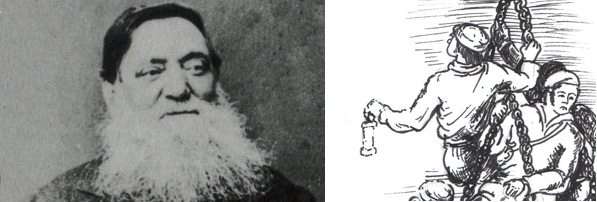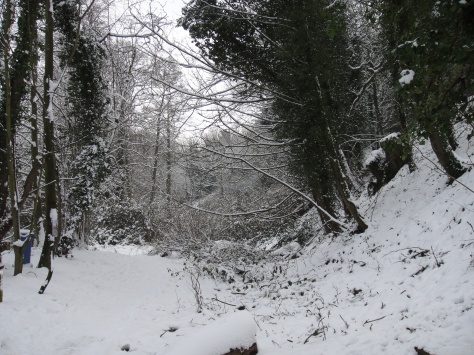I’ve come to C heltenham today to meet up with one of the members of staff at DCHQ, a rather secret organisation in this pleasant Regency town, best known for horse-racing and … the other place. We meet in a café near the museum, a busy and slightly noisy place. Agent Krisa smiles at my surprise and confides that the noisier and busier the place, the less likely people are to overhear. She’s a tall, dark haired woman, dressed loudly in a shiny, but rather tweedy jacket, and with severe glasses that make her look older than she probably is. There’s something of the schoolmistress there – or maybe, given her job at DCHQ – a librarian. For Agent Krisa has an important role there – she is the Keeper of Tails – oops, I mean Tales.
heltenham today to meet up with one of the members of staff at DCHQ, a rather secret organisation in this pleasant Regency town, best known for horse-racing and … the other place. We meet in a café near the museum, a busy and slightly noisy place. Agent Krisa smiles at my surprise and confides that the noisier and busier the place, the less likely people are to overhear. She’s a tall, dark haired woman, dressed loudly in a shiny, but rather tweedy jacket, and with severe glasses that make her look older than she probably is. There’s something of the schoolmistress there – or maybe, given her job at DCHQ – a librarian. For Agent Krisa has an important role there – she is the Keeper of Tails – oops, I mean Tales.
It turns out that they do outreach, you see, and in Stroud’s Museum in the Park on Sunday 23 April – the day we know as St George’s Day, but they call National Dragon Day for reasons that will become apparent – she and Agent Green from the same organisation are going to be telling stories, and Agent Green is going to be doing some practical activities with the children.
My interview doesn’t get off to the best of starts…
H: What can you tell me about DCHQ? I know it’s very secret.
AK: Indeed. All you need to know is that it’s the Dragon Conservation Headquarters – I think the title says it all, really. Don’t you?
H: And your role, Keeper of Tales? What does that, ahem, entail?
AK: My job is to look after the records. I’m an archivist – although there’s a bit of a museum there, too – you know, the twisted swords of those who tried to kill dragons, some burnt bricks from destroyed cities, that kind of thing.
H: Really?
AK: Oh yes, of course, the dragons are great hoarders, so our storerooms are quite, quite full. But I spend most of my time with the records. Our archive is the most important archive of dragon stories in the world – well, the Chinese have pretty good records. We’ve got the very earliest tales, like Marduk and Tiamat from ancient from ancient Babylon on clay cuneiform cylinders, we’ve got all the St George stories, and, of course – all the current sightings and stories are held there too.
H: Sounds fascinating? So, how did you get into this?
AK: Well, I was a little bit older than Agent Green – she was recruited straight from university for her … unique skills. I, however, was already a fully qualified archivist before I got the job. It all happened in Greece, you see. My name – well, its not really my name, you understand, is like Agent Green’s – except its Greek, almost the Greek for gold. My father is a Greek Cypriot, so it seemed the right thing, especially after what happened. I was hiking in the mountains of the Peloponnese when I was about 30, and I’d got a little lost and was feeling a little concerned that I’d be stuck out all night. I mean, it was very beautiful – but you know there’s no mountain rescue in Greece! Then, when I turned a corner – I chanced upon a young dragon sunning herself. I don’t know who was more startled. I’m not afraid to say that I thought my time was up! But, in fact, she was very helpful, especially when she learnt what I did for a living – turns out she had a hoard of old scrolls from hundreds of years ago that she was looking after and was keen for someone to look after them.
H: Gosh, what happened then?
AK: Well, dear Fotia, as I learnt she was called (it means fire!) carried me down to the path again, I went back to where I was staying and in the morning I thought I’d dreamt it. I mean, I’d read a lot of fantasy books, and I’d read a lot of folk tales – and was quite adept at telling them, too – but dragons? No!
H: But you are working for DCHQ now, so…
AK: Yes. I went home to England again – I was living in Bath then, a favourite dragon place, I later learnt – and there on the doormat was waiting a letter, inviting me to an interview at a secret location in Cheltenham. I was to be met by an official – and there was the blindfold and everything. I was quite unnerved. But when I saw the archive for the first time, I knew I had to take the job!
H: So, describe a normal day at DCHQ for you
AK: First thing, I check that the environmental conditions are still stable. Many of our records are very, very old so we have to ensure that the temperature and relative humidity stay stable. With all our friends around it can sometimes get a little hot, as I am sure you can imagine … and if things do get a little damp, I know I can easily warm things up! But its a question of making sure they don’t get too hot… Then I spend lot of time digitising the records – scanning and typing up onto our database. I catalogue the new acquisitions, manage the volunteers – making they know to cover their claws and put on the protective fire-proof muzzle – some of them can get quite excitable as they read the tales of their ancestors, you know.
H: You mean…
AK: Oh yes, they do like to get involved!
I’m fascinated, but Agent Krisa has now finished her coffee and, although she’s all smiles, I can see she’s looking to wrap things up.
H: So, what’s happening this Sunday?
AK: Agent Green is doing one of her outreach sessions. She’ll be teaching basic dragon tracking – how survive your first encounter with a wild dragon … Stabling and feeding … Techno-magical devices and clothing … What to wear for formal meetings with dragons. Plus important first aid such as What to do if your dragon’s flame goes out. Great fun! We all have to cover this, you know! And I’ll be telling some tales from the archives – including St George’s story, and one of those ancient tales from my first dragon friend, Fotia.
H: When is all this, then? And how can we book?
AK: It starts at 3pm, in the Museum in the Park. You can book by calling the museum on 01453 763394, just £3 for children and adults go free! We’re really looking forward to seeing you there. Perhaps you should come and find out more.
And with that she’s gone … and I realise she’s left me to pay!









 On Friday night I had an absolute blast! I had the privilege to take part in an amazing show,
On Friday night I had an absolute blast! I had the privilege to take part in an amazing show, 
 And all of this in the most amazing venue, Gloucester Blackfriars. Hard to believe the difference in the site from when I worked in Gloucester 10 or so years ago. I worked in the Docks, a bare hop (not even a skip and a jump) away, and although I knew it was there, of course I never went in. Now it’s a fantastic venue, perfect for storytelling and music. So atmospheric … the courtyard magical with little lights and the sound of the superb Gwilym Davies on pipe and tabor ushering in the guests with music, and the thrill of being in the building with all its layers – the great fireplace hanging above us as we performed, that strange combination of church and home. A friend and I were wondering what ghosts marched above our heads, pacing out an afterlife on lost floors… The Inkies had made it beautiful, too, and I particularly loved the film of the Forest with fairies playing above me – what could have been more fitting for the Fairy Horn?
And all of this in the most amazing venue, Gloucester Blackfriars. Hard to believe the difference in the site from when I worked in Gloucester 10 or so years ago. I worked in the Docks, a bare hop (not even a skip and a jump) away, and although I knew it was there, of course I never went in. Now it’s a fantastic venue, perfect for storytelling and music. So atmospheric … the courtyard magical with little lights and the sound of the superb Gwilym Davies on pipe and tabor ushering in the guests with music, and the thrill of being in the building with all its layers – the great fireplace hanging above us as we performed, that strange combination of church and home. A friend and I were wondering what ghosts marched above our heads, pacing out an afterlife on lost floors… The Inkies had made it beautiful, too, and I particularly loved the film of the Forest with fairies playing above me – what could have been more fitting for the Fairy Horn?



